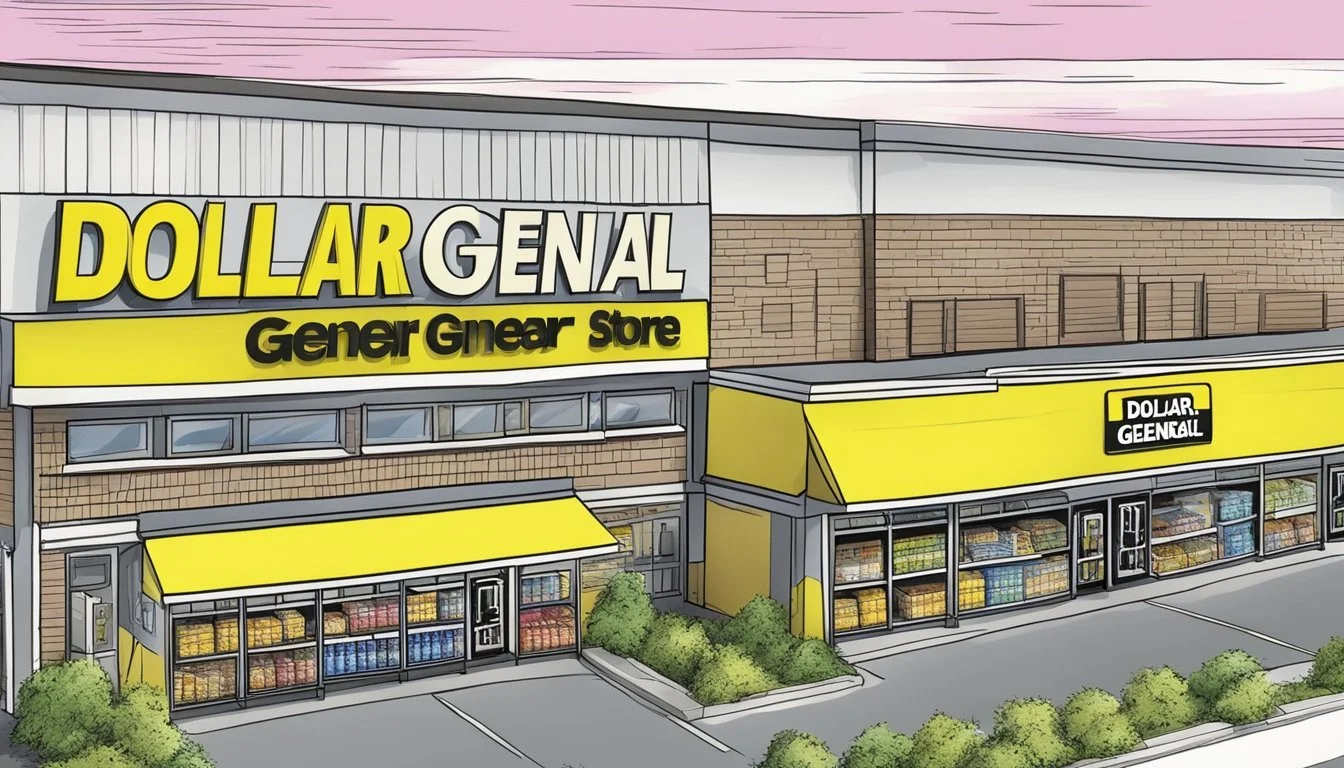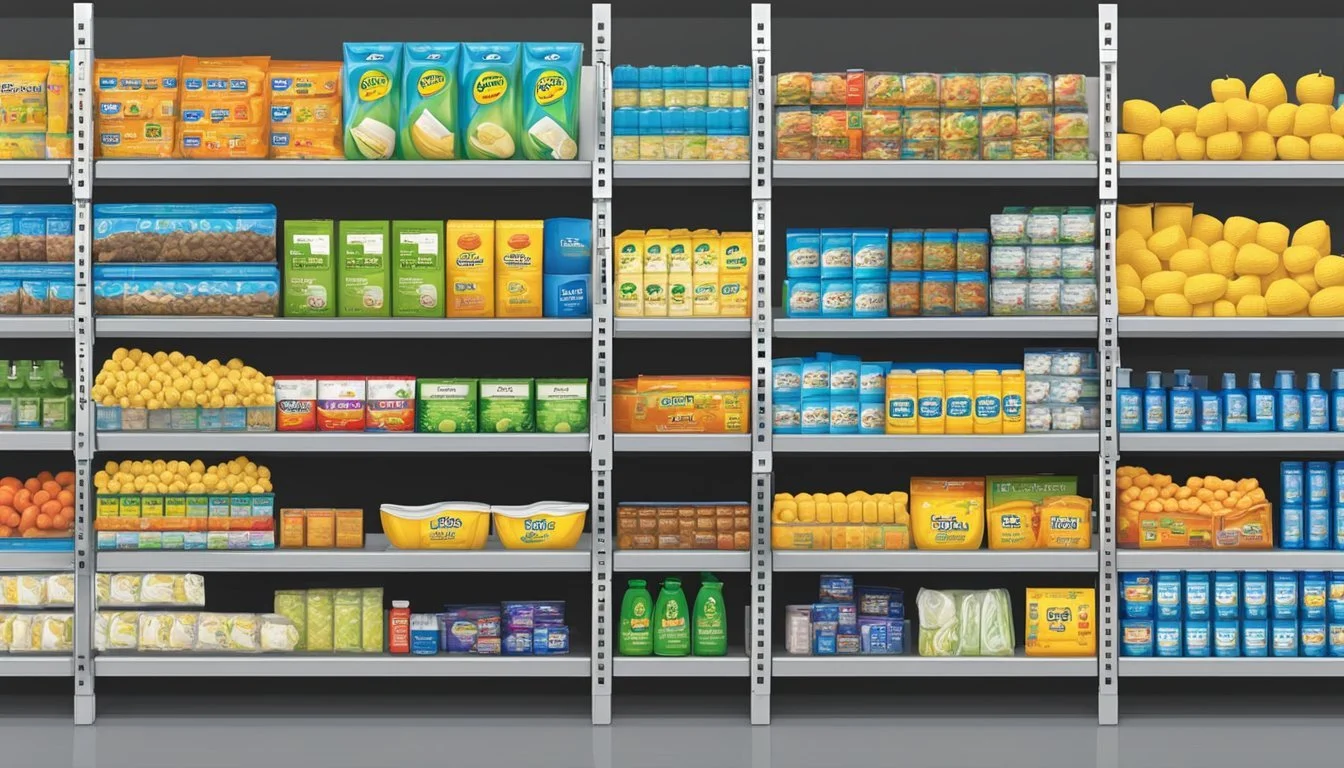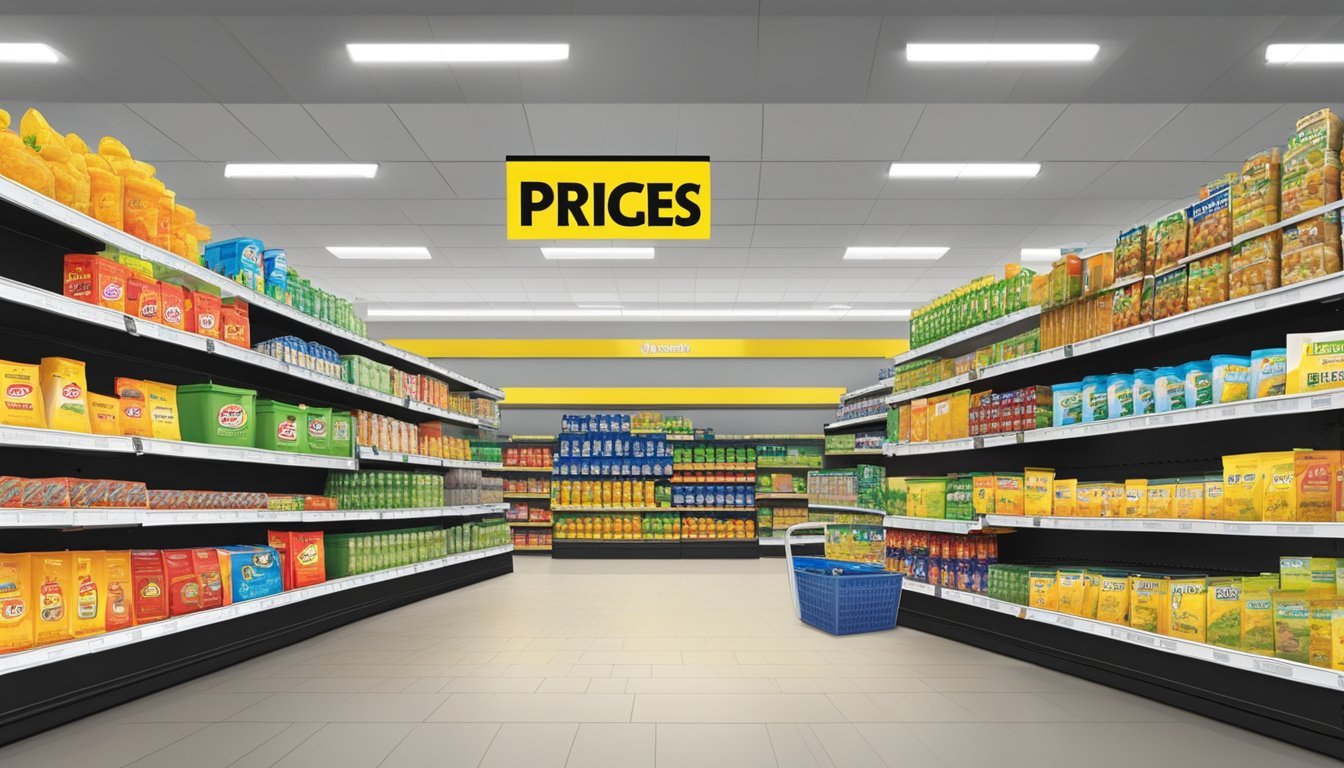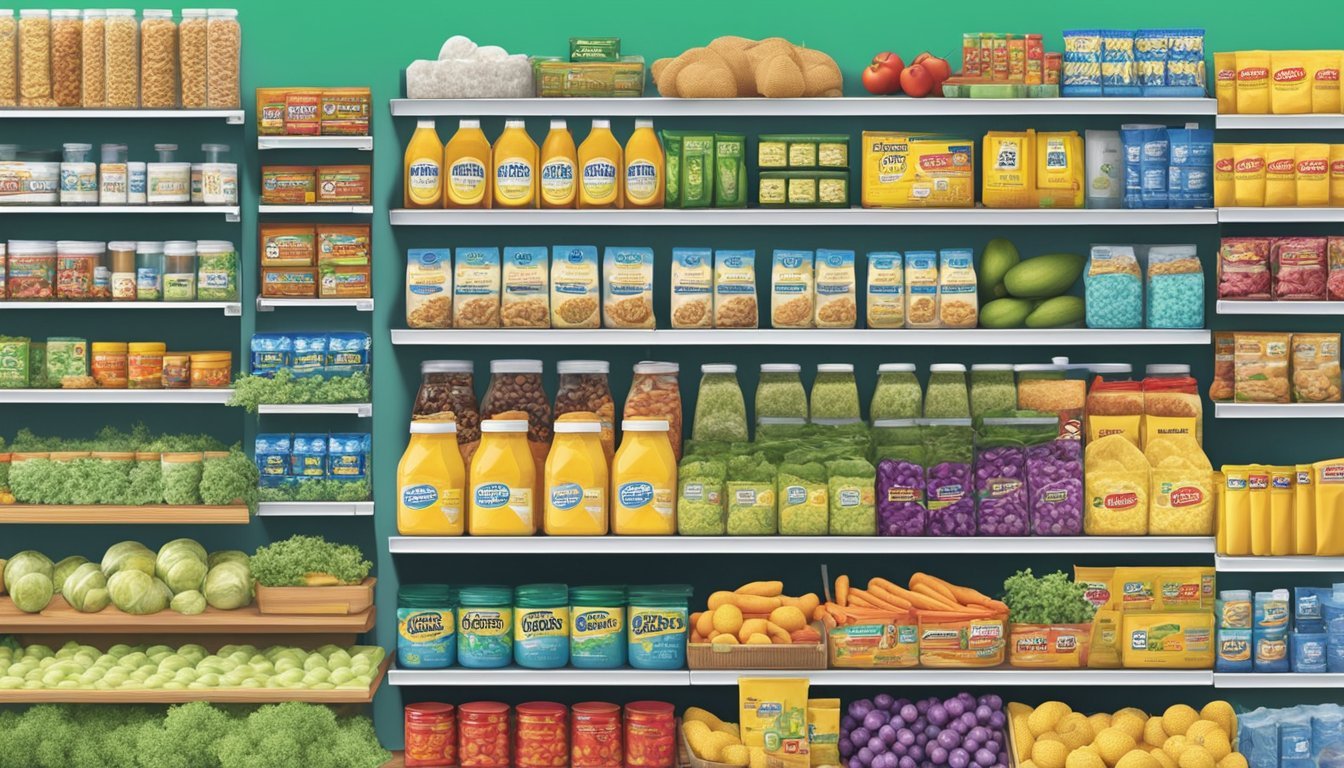Is Dollar General Cheaper Than Kroger?
A price comparison of budget-friendly stores
Grocery shoppers looking to stretch their budgets often compare prices at different stores. Dollar General and Kroger are two popular options, but which one offers better value?
Contrary to what some may expect, Dollar General is not necessarily cheaper than Kroger for groceries. Recent analyses have found that Kroger often provides more competitive prices, especially for a wider range of products. While Dollar General may have lower prices on select items, Kroger's overall pricing strategy and frequent promotions can result in significant savings for consumers.
Price comparisons between these two retailers reveal interesting insights. Dollar General has been increasing food prices at a faster rate than competitors like Kroger. This shift has impacted the perception of Dollar General as a budget-friendly option. Meanwhile, Kroger has maintained its focus on offering value through various means, including competitive pricing on organic produce and store-brand alternatives.
Overview of Dollar General
Dollar General has become a prominent player in the discount retail sector, focusing on providing affordable products in convenient locations. The company's strategy centers on serving rural and underserved communities across the United States.
Business Model
Dollar General operates on a low-cost, high-volume business model. The company keeps expenses down by maintaining smaller stores with limited staff. This allows them to offer products at competitive prices while still generating profits.
Dollar General targets price-sensitive consumers in areas with limited retail options. Their stores carry a mix of national brands and private label products across various categories.
The company aims to be a one-stop shop for essential items. This approach helps drive frequent visits from local customers.
Store Locations and Size
Dollar General primarily focuses on rural and suburban areas. As of 2024, the chain has over 18,000 stores across 47 states.
Their stores are typically smaller than traditional supermarkets or big-box retailers. The average Dollar General location is around 7,400 square feet.
This smaller footprint allows the company to open stores in areas that may not support larger retailers. It also enables faster and less expensive store openings.
Many Dollar General stores are located within a 5-mile radius of small towns and communities. This proximity makes them a convenient option for local shoppers.
Product Selection and Brands
Dollar General offers a curated selection of everyday essentials. Their inventory includes food, cleaning supplies, health and beauty products, and basic household items.
The stores carry a mix of national brands and private label products. Popular private labels include Clover Valley for food items and DG Home for household goods.
Dollar General's product assortment is more limited compared to larger retailers. They focus on fast-moving, high-demand items that cater to their target demographic.
The company also offers seasonal merchandise and a small selection of clothing and accessories.
Pricing Strategy
Dollar General's pricing strategy aims to be competitive with larger retailers while offering the convenience of neighborhood locations. They use a combination of everyday low prices and promotional discounts.
Not all items are priced at $1, contrary to what the name might suggest. Many products are priced below $10, with a focus on value.
The company leverages its private label brands to offer lower-priced alternatives to national brands. This helps attract budget-conscious shoppers.
Dollar General also runs weekly specials and digital coupons to drive traffic and sales. Their DG Digital Coupons program allows customers to save additional money on select items.
Overview of Kroger
Kroger stands as a major player in the American grocery retail landscape, offering a wide range of products and services to consumers nationwide. The company's extensive network and diverse offerings have solidified its position as one of the largest supermarket chains in the United States.
Company Profile
Kroger was founded in 1883 by Barney Kroger in Cincinnati, Ohio. Today, it operates over 2,700 stores across 35 states under various banners. The company employs more than 450,000 associates and serves millions of customers daily. Kroger's store formats include supermarkets, multi-department stores, price-impact warehouse stores, and marketplace stores.
Kroger has expanded through acquisitions and mergers, including notable purchases like Fred Meyer in 1999 and Harris Teeter in 2014. These strategic moves have helped Kroger increase its market presence and diversify its offerings.
Supermarket Offerings
Kroger supermarkets provide a comprehensive shopping experience. Customers can find:
Fresh produce and meats
Bakery items
Deli products
Dairy goods
Frozen foods
Household items
Health and beauty products
Many Kroger locations also feature pharmacies, fuel centers, and floral departments. The company has embraced digital technology, offering online ordering and delivery services to cater to changing consumer preferences.
Variety and Quality of Products
Kroger stocks a mix of national brands and private-label products. The company's private brands include:
Simple Truth (organic and natural products)
Private Selection (premium items)
Kroger Brand (everyday essentials)
These private labels offer customers quality alternatives at competitive prices. Kroger also emphasizes fresh, high-quality produce and meats, often sourcing from local suppliers when possible.
The company has invested in quality control measures and food safety protocols to maintain product standards. Kroger's commitment to variety is evident in its international food sections and specialty departments catering to diverse dietary needs and preferences.
Financial Strategy
Kroger's financial approach focuses on balancing growth with cost management. Key aspects include:
Investing in digital initiatives and e-commerce capabilities
Expanding private-label offerings to improve margins
Optimizing supply chain and logistics operations
Implementing data-driven pricing strategies
The company has also pursued strategic partnerships, such as its collaboration with Ocado for automated fulfillment centers. Kroger's financial strategy aims to drive shareholder value while adapting to changing market conditions and consumer behaviors in the competitive grocery sector.
Comparative Price Analysis
Dollar General and Kroger employ different pricing strategies to attract customers. Their approaches to everyday items, seasonal deals, and loyalty programs impact overall affordability.
Everyday Item Price Comparison
Dollar General typically offers lower prices on many household essentials compared to Kroger. A basket of common groceries and household items often costs less at Dollar General. However, Kroger tends to have better prices on fresh produce and meat.
Dollar General's smaller store format allows for lower overhead costs, contributing to their competitive pricing. Kroger's larger selection and focus on quality can lead to higher prices in some categories.
For budget-conscious shoppers, Dollar General frequently beats Kroger on packaged goods, cleaning supplies, and personal care items.
Seasonal Discounts and Offers
Both retailers provide seasonal sales, but their approaches differ. Dollar General runs frequent "instant savings" events, offering steep discounts on specific items for limited periods. These sales often target seasonal products or overstocked merchandise.
Kroger's seasonal promotions tend to be broader, covering more product categories. They often tie discounts to their loyalty program, providing deeper savings for regular customers.
Holiday-specific sales at both stores can offer significant savings, with Dollar General focusing on decorations and small gifts, while Kroger emphasizes food and entertaining essentials.
Loyalty Programs and Coupons
Kroger's loyalty program is more comprehensive than Dollar General's. Kroger Plus Card members earn fuel points and receive personalized digital coupons based on shopping habits. Their program integrates seamlessly with their mobile app, making savings easily accessible.
Dollar General's DG Digital Coupons program is simpler but still effective. It offers digital coupons for additional savings on already low-priced items. However, it lacks the personalization and rewards structure of Kroger's program.
Both stores accept manufacturer coupons, but Kroger often allows coupon stacking for greater savings. Dollar General's simpler pricing model means fewer opportunities for extreme couponing compared to Kroger.
Shopping Experience
Dollar General and Kroger offer distinct shopping experiences tailored to different customer needs. Their approaches to store layout, customer service, and online options vary significantly.
Store Layout and Convenience
Dollar General stores are typically smaller and more compact than Kroger locations. This design allows for quick trips and easy navigation. Products are often displayed in cardboard boxes or on simple shelves, creating a no-frills atmosphere.
Kroger stores are larger, providing a wider selection of products. They feature dedicated departments for produce, meat, bakery, and deli items. The spacious layout accommodates full grocery shopping trips.
Dollar General focuses on basic necessities and household items. Kroger offers a more comprehensive range, including specialty and gourmet products.
Customer Service
Dollar General emphasizes efficiency over personalized service. Stores often operate with minimal staff to keep costs low. This can result in longer checkout lines during busy periods.
Kroger invests more in customer service. Stores are usually better staffed, with employees available to assist shoppers. Many locations offer specialized services like pharmacy consultations and floral departments.
Both chains train their staff in basic customer service skills. However, Kroger's larger format and wider product range may require more knowledgeable staff to assist customers.
Online Shopping Options
Dollar General's online presence is growing but still limited. The company offers a basic e-commerce platform for some products. In-store pickup is available at select locations.
Kroger provides a more robust online shopping experience. Customers can order groceries for pickup or delivery through Kroger.com. The platform offers features like customized shopping lists and digital coupons.
Both chains have mobile apps, but Kroger's app is more feature-rich. It includes tools for meal planning, prescription refills, and fuel points tracking.
Dollar General's online options cater to basic needs. Kroger's digital platforms aim to provide a full-service grocery experience.
Market Position and Competition
Dollar General and Kroger occupy distinct positions in the competitive retail landscape. Their pricing strategies and market approaches differ significantly, impacting consumer choices and spending habits.
Competitor Overview
Dollar General primarily competes with other discount retailers like Family Dollar and Dollar Tree. Its focus on low-priced merchandise appeals to budget-conscious shoppers. Kroger, as the largest supermarket chain in the U.S., faces competition from traditional grocers like Albertsons and Publix, as well as big-box retailers like Walmart.
Both companies also contend with Amazon's growing presence in the grocery sector. Kroger operates 2,800 stores across 35 states, while Dollar General has over 18,000 locations, primarily in rural and suburban areas.
Market Trends
Inflation has significantly impacted retail pricing strategies. The Consumer Price Index for food has risen sharply, prompting retailers to adjust their pricing and product offerings.
Dollar General has increased food prices more aggressively than competitors like Walmart and Kroger, according to Bank of America analysts. This shift may affect its perceived value proposition among price-sensitive consumers.
Kroger has invested in expanding its private label offerings and digital capabilities to maintain competitiveness. The company's merger with Albertsons aims to strengthen its market position against larger rivals like Walmart.
Consumer Preferences
Price remains a crucial factor for many shoppers, especially in economically challenging times. Dollar General's expansion into fresh produce and refrigerated goods aims to capture more of consumers' grocery spending.
Kroger's focus on organic and natural products appeals to health-conscious consumers. The company has also enhanced its loyalty program to better cater to individual shopper preferences.
Convenience plays a significant role in consumer choices. Dollar General's widespread presence in rural areas gives it an advantage in serving customers with limited access to larger supermarkets.
Cost Factors for Retailers
Retail pricing is influenced by several key factors that impact a company's ability to offer competitive prices. These elements shape the cost structure and ultimately determine how retailers like Dollar General and Kroger set their prices.
Supply Chain Dynamics
Efficient supply chains are crucial for keeping costs down. Retailers with streamlined logistics can reduce transportation expenses and minimize inventory holding costs. Large companies often have sophisticated distribution networks, allowing them to move products quickly and cost-effectively.
Some retailers invest in their own trucking fleets to control shipping costs. Others negotiate favorable contracts with third-party logistics providers. The ability to optimize inventory levels also plays a role, as excess stock ties up capital and increases storage costs.
Volume and Buying Power
Purchasing volume significantly impacts a retailer's costs. Larger chains can often negotiate better deals with suppliers due to their substantial order quantities. This buying power allows them to secure lower prices on goods, which can then be passed on to customers.
Major retailers frequently develop strong relationships with suppliers, leading to preferential pricing or exclusive product lines. Some chains, like Walmart, are known for their aggressive negotiations with vendors to keep costs low.
Store-brand items also factor into pricing strategies. Retailers can often produce private label products more cheaply than name brands, increasing profit margins while offering lower prices to consumers.
Operational Costs
Day-to-day expenses greatly influence retail pricing. Labor costs are a major component, with wages, benefits, and staffing levels all impacting the bottom line. Retailers must balance service quality with labor efficiency to remain competitive.
Rent and utilities for store locations are significant expenses. Companies with a larger footprint of stores may benefit from economies of scale in certain operational areas. However, they must also manage the costs associated with maintaining numerous locations.
Technology investments can help reduce operational costs long-term. Automated checkout systems, inventory management software, and data analytics tools can improve efficiency and reduce labor needs. These innovations often require substantial upfront costs but can lead to savings over time.
Consumer Savings Strategies
Shoppers can employ several tactics to maximize their savings when comparing prices between Dollar General and Kroger. These strategies focus on leveraging discounts, analyzing unit costs, and optimizing shopping trips.
Utilizing Discounts and Coupons
Both Dollar General and Kroger offer various discounts and coupons to attract customers. Dollar General provides digital coupons through its app, which can be applied at checkout. Kroger offers a loyalty program with personalized discounts based on shopping habits.
Shoppers should sign up for both stores' loyalty programs to access exclusive deals. Combining manufacturer coupons with store promotions can lead to significant savings. It's important to read the fine print on coupons to ensure they apply to desired items.
Some stores offer price matching policies. Consumers can take advantage of this by bringing competitors' ads to secure the lowest price.
Comparing Unit Prices
Unit pricing is a crucial tool for determining the best value. Shoppers should look beyond the sticker price and compare the cost per ounce, pound, or unit.
Dollar General often sells smaller package sizes, which may appear cheaper at first glance. However, larger quantities at Kroger might offer a lower unit price. To make accurate comparisons:
Check the unit price labels on store shelves
Use a calculator to divide the total price by the quantity
Compare similar products across different brands and sizes
This method helps identify the true bargains and prevents falling for marketing tricks that make items seem cheaper than they are.
Planning Shopping Trips
Strategic planning can lead to substantial savings. Create a detailed shopping list before visiting either store. This helps avoid impulse purchases and ensures you buy only necessary items.
Research weekly ads from both Dollar General and Kroger to identify sales and promotions. Plan trips around these deals to maximize savings. Consider:
Timing purchases with seasonal sales
Buying non-perishables in bulk when prices are low
Alternating between stores based on their best offers
Meal planning can also reduce costs by preventing food waste and allowing for more efficient use of ingredients. By aligning shopping trips with meal plans, consumers can take full advantage of current promotions and avoid unnecessary purchases.
Analysis of Specific Product Categories
Dollar General and Kroger offer different pricing strategies across various product categories. Certain items may be cheaper at one retailer versus the other, depending on the specific category and local market conditions.
Fresh Produce and Meat
Dollar General's selection of fresh produce and meat is typically more limited than Kroger's. Kroger often has lower prices on fruits, vegetables, and meats due to its larger scale and direct relationships with suppliers. For example:
Apples: $0.99/lb at Kroger vs $1.25/lb at Dollar General
Ground beef: $3.99/lb at Kroger vs $4.50/lb at Dollar General
Dairy products like milk and eggs are usually priced similarly between the two stores. Kroger's wider selection of organic and specialty produce gives it an edge for health-conscious shoppers.
Pantry Staples and Packaged Goods
Dollar General often has competitive prices on shelf-stable items and packaged goods. Their private label offerings can be significantly cheaper than name brands at Kroger. Some price comparisons:
Canned vegetables: $0.75 at Dollar General vs $0.89 at Kroger
Pasta: $1.00 at Dollar General vs $1.25 at Kroger
Cereal: $2.50 at Dollar General vs $3.25 at Kroger
Kroger's larger stores carry a wider variety of brands and sizes, which can lead to better deals through bulk purchases or sales promotions.
Household and Personal Items
Dollar General frequently offers lower prices on household essentials and personal care products. Their smaller package sizes can result in a lower upfront cost, though the per-unit price may be higher. Examples include:
Laundry detergent: $4.95 at Dollar General vs $5.99 at Kroger
Toilet paper: $3.50 at Dollar General vs $4.25 at Kroger
Toothpaste: $1.00 at Dollar General vs $1.50 at Kroger
Kroger's loyalty program and digital coupons can sometimes make their prices more competitive, especially for larger sizes or multi-packs of these items.
Case Studies and Research
Recent studies have examined pricing trends, shopping behaviors, and financial performance of major retailers like Dollar General and Kroger. This research provides valuable insights into how these companies compare on costs, product selection, and profitability.
Price Studies on Grocery Items
A 2023 Bank of America analysis found Dollar General had increased food prices more aggressively than competitors like Walmart and Kroger. The study compared prices at stores in Dallas, Texas.
Another price comparison by Business Insider in April 2023 revealed Walmart was generally cheaper than Dollar General for groceries. Out of 12 common items checked, Walmart had lower prices on 10 products.
A broader survey reported by FOX 26 Houston showed mixed results. While Walmart had the lowest overall prices, Dollar General tied Target for second place. Both were about 6% cheaper than Kroger on the basket of goods compared.
Demographic Shopping Patterns
Research indicates income levels influence shopping preferences between Dollar General and Kroger. Lower-income households tend to favor Dollar General for its perceived value and convenience.
Middle and higher-income consumers more frequently shop at Kroger, attracted by its wider selection and fresh produce offerings. Kroger's loyalty program and fuel rewards also appeal to this demographic.
Rural areas see higher Dollar General patronage due to the chain's extensive small-town presence. Kroger maintains stronger market share in suburban and urban locations.
Retailer Growth and Profit Analysis
Dollar General has experienced rapid store expansion, opening thousands of new locations annually. This growth strategy aims to capture market share in underserved areas.
Kroger's growth has been more measured, focusing on improving existing stores and expanding digital offerings. The company has invested heavily in e-commerce and pickup services.
Profit margins differ between the two retailers. Dollar General typically maintains higher profit margins due to its low-cost operating model and focus on private-label products.
Kroger's margins are generally lower, impacted by higher operating costs and investments in technology and store upgrades. However, Kroger's larger sales volume contributes to strong overall profits.









